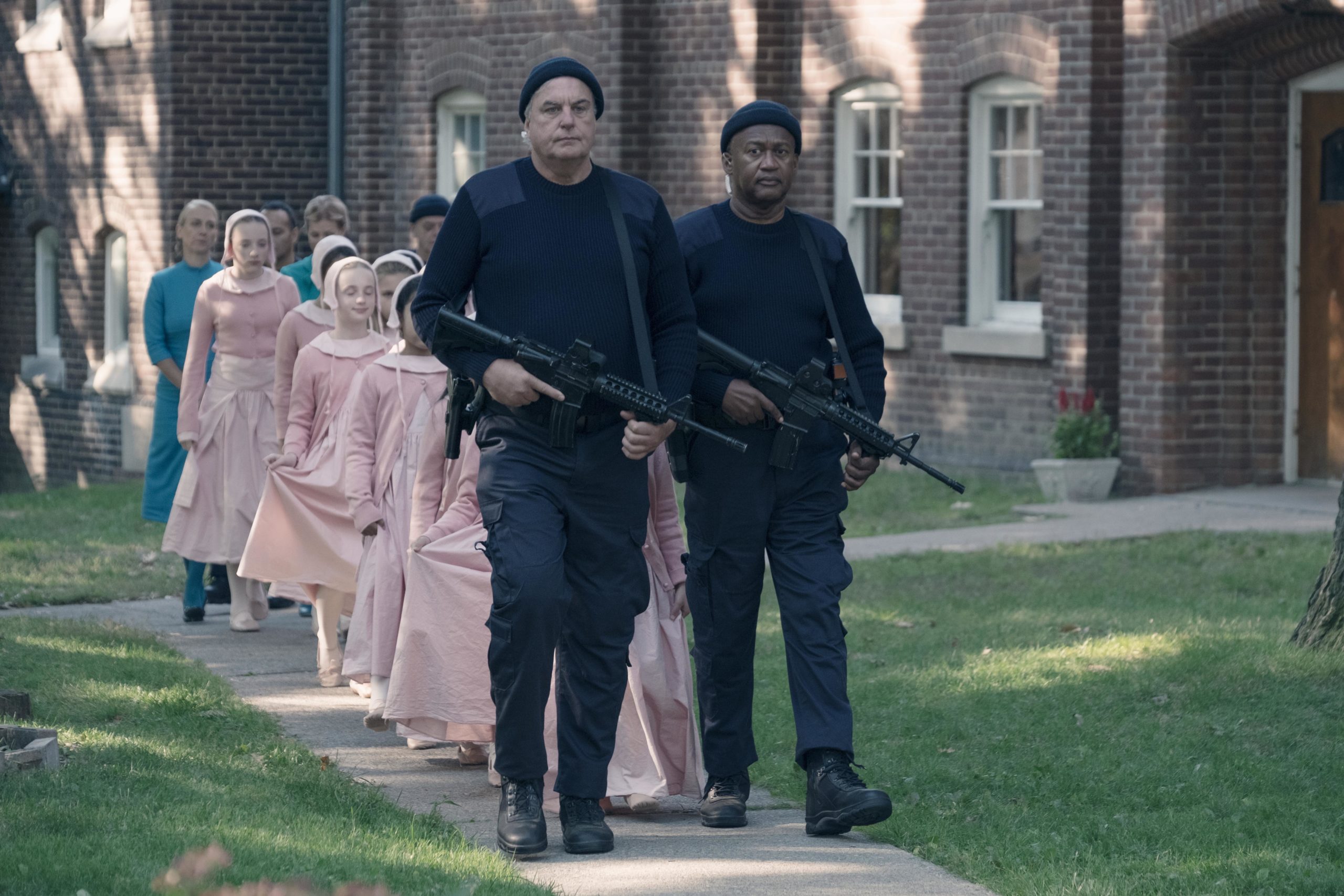 If you thought life during COVID-19 lockdown seems awful, trust me — it’s got nothing on Gilead. That’s the fictional setting of The Handmaid’s Tale, a riveting dystopian TV show that’s racked up awards for Hulu since its 2017 debut on the streaming service.
If you thought life during COVID-19 lockdown seems awful, trust me — it’s got nothing on Gilead. That’s the fictional setting of The Handmaid’s Tale, a riveting dystopian TV show that’s racked up awards for Hulu since its 2017 debut on the streaming service.
I’ve burned my way through the first season, and I can’t take my eyes off this terrifying vision of a perverted future.
The Handmaid’s Tale review

Photo: Hulu
In the series, which is based on Margaret Atwood’s 1985 novel of the same name, pollution and other factors leads to widespread infertility. A civil war breaks out in the United States, and a totalitarian government seizes control and rapidly rewrites society’s rules. The ostensibly Christian leadership sets up a class-based, color-coded social order. Unfortunately, these religious whack jobs take their most brutal and repressive cues from the Old Testament.
Life in Gilead is terrible for everyone (aside from the ruling class, of course, although even they seem mostly miserable). But for fertile women identified by the regime, things prove particularly dire. Dubbed “Handmaids” and forced into sexual slavery, they get assigned to married Commanders. Dressed in red outfits with nun-like “wings” on their heads, the Handmaids basically function as human broodmares.
The lead character, a Handmaid known as Offred, provides the perfect lens to witness the unfolding madness. Brilliantly played by Emmy winner Elisabeth Moss (Mad Men), Offred’s story reveals the full horrific panoply of life in this militarized world. Moss effectively conveys the pain, the fear, the hopelessness and the rage that simmer and erupt in this new hierarchical society.
Early on, we witness a reproductive rite know as The Ceremony that reduces sex to its most basic function: insemination. The ritualized rape involves a Commander, his Wife and a Handmaid, with a bizarre biblical passage used to justify the barbaric practice.
A truly disturbing dystopian vision

Photo: George Kraychyk/Hulu
While the Handmaids’ function in the society — pumping out children for the pampered elite — is never far from the surface, The Handmaid’s Tale goes much deeper than that. The writers expertly jump from prewar normality to post-war dystopia, elegantly layering on details about how this nightmare scenario came into existence. Fast-eroding freedoms, omnipresent surveillance, brutal punishments — the government wields these hideous tools to control the populace. The flimsy, pious phrases uttered by the inhabitants of this hellscape make the harsh theonomy all the more unsettling.
Each episode in Season 1 of The Handmaid’s Tale brings surprising new revelations about the government’s twisted and sadistic tactics. Throughout, strong performances from Moss and others bring the compelling writing vividly to life. Stunning cinematography and a superb soundtrack are sublime icing on the horrifying cake.
Filled with disturbing and depressing imagery, The Handmaid’s Tale is definitely not a lightweight distraction. But if you’re looking for a smart show that makes dealing with the current pandemic seem like child’s play, this dialed-in dystopia delivers. I can’t wait to watch the next two seasons.
Rating: TV-MA
Watch on: Hulu (Note: Even if you’re not a Hulu subscriber, you can watch it right now on your iPhone, iPad or Apple TV because Hulu offers a free trial. Plus, Xfinity customers can watch free this week during the Xfinity Watchathon Week 2020.)
What We’re Into is a recurring feature on The CultCast, the official podcast of Cult of Mac. The segment gives us a chance to talk about things not necessarily related to Apple (but still totally addictive).
![Dystopia doesn’t get any more disturbing than The Handmaid’s Tale [What We’re Into] In The Handmaid's Tale, Elisabeth Moss makes the nightmare real.](https://www.cultofmac.com/wp-content/uploads/2020/05/hl11172120-1536x1024.jpg)


